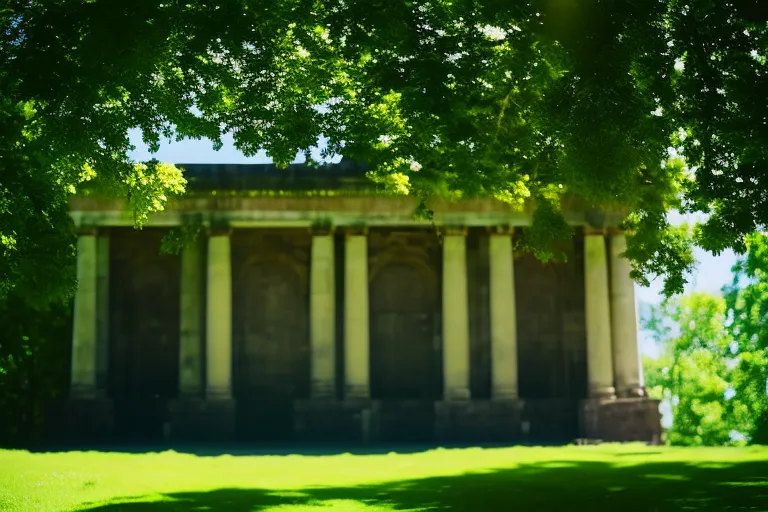If you're a solo traveler looking for an unforgettable experience, Tbilisi is the perfect destination. The capital of Georgia offers a rich history, stunning architecture, and a unique blend of cultures. One of the best ways to discover the city's rich heritage is by exploring its religious sites. In this post, we'll guide you through Tbilisi's most important religious landmarks and share tips for exploring them as a solo traveler.
The Holy Trinity Cathedral of Tbilisi
The Holy Trinity Cathedral, also known as Sameba, is one of the most impressive religious sites in Tbilisi. Located on Elia Hill, this massive cathedral is the largest in Georgia and can accommodate up to 15,000 worshippers. The cathedral's stunning architecture and intricate frescoes make it a must-see attraction for any visitor to Tbilisi.
As a solo traveler, you can take your time exploring the cathedral and admiring its beauty. You can also attend a service and experience the spiritual side of Georgian culture. Just remember to dress modestly and be respectful of the worshippers.
One of the most interesting things about the Holy Trinity Cathedral is its history. The cathedral was built in the early 21st century, but it was designed to look like a traditional Georgian Orthodox church. The construction of the cathedral was funded by donations from the Georgian people, and it took almost a decade to complete. Today, the cathedral is a symbol of Georgian Christianity and a testament to the faith of the Georgian people.
The Sioni Cathedral
The Sioni Cathedral is another important religious site in Tbilisi. Located in the heart of the Old Town, this cathedral has been a symbol of Georgian Christianity for centuries. The cathedral's interior is adorned with beautiful frescoes and mosaics, and the atmosphere is peaceful and serene.
As a solo traveler, you can attend a service at the Sioni Cathedral and witness the devotion of the Georgian people. You can also explore the surrounding area and discover the charming streets of the Old Town.
The Sioni Cathedral has a rich history that dates back to the 6th century. The cathedral has been destroyed and rebuilt several times over the centuries, but it has always remained a symbol of Georgian Christianity. Today, the Sioni Cathedral is a popular destination for tourists and a place of worship for the Georgian people.
The Anchiskhati Basilica
The Anchiskhati Basilica is the oldest church in Tbilisi, dating back to the 6th century. Located in the heart of the Old Town, this small but charming church is a hidden gem waiting to be discovered. The interior is adorned with beautiful frescoes and the atmosphere is peaceful and serene.
As a solo traveler, you can take your time exploring the Anchiskhati Basilica and admiring its beauty. You can also attend a service and experience the spiritual side of Georgian culture.
The Anchiskhati Basilica has a fascinating history. The church was built by the King of Iberia in the 6th century and was originally dedicated to the Virgin Mary. Over the centuries, the church has been used for a variety of purposes, including as a mosque during the Ottoman Empire. Today, the Anchiskhati Basilica is a popular destination for tourists and a place of worship for the Georgian people.
The Jvari Monastery
The Jvari Monastery is located just outside of Tbilisi, on a hill overlooking the city. This UNESCO World Heritage Site is an important pilgrimage destination for Georgian Orthodox Christians. The monastery's stunning architecture and breathtaking views make it a must-see attraction for any visitor to Tbilisi.
As a solo traveler, you can take a taxi or public transportation to the Jvari Monastery and explore the surrounding area. You can also attend a service and witness the devotion of the Georgian people.
The Jvari Monastery has a rich history that dates back to the 6th century. The monastery was built on the site where Saint Nino, the patron saint of Georgia, erected a cross in the 4th century. The monastery has been destroyed and rebuilt several times over the centuries, but it has always remained a symbol of Georgian Christianity. Today, the Jvari Monastery is a popular destination for tourists and a place of worship for the Georgian people.
Tips for Exploring Tbilisi's Religious Sites as a Solo Traveler
-
Dress modestly: When visiting religious sites in Tbilisi, it's important to dress modestly out of respect for the worshippers. This means covering your shoulders and knees, and avoiding revealing clothing.
-
Be respectful: When visiting religious sites in Tbilisi, it's important to be respectful of the worshippers and the sacred space. This means avoiding loud noises, taking off your shoes when necessary, and refraining from taking photos during services.
-
Attend a service: Attending a service at a Georgian Orthodox church is a unique and unforgettable experience. As a solo traveler, you can witness the devotion of the Georgian people and experience the spiritual side of Georgian culture.
-
Take your time: Tbilisi's religious sites are not to be rushed. Take your time exploring each site and admiring its beauty. This will allow you to fully appreciate the rich history and culture of Tbilisi.
-
Hire a guide: If you want to learn more about the history and culture of Tbilisi's religious sites, consider hiring a guide. A knowledgeable guide can provide valuable insights and help you navigate the sites with ease.
Conclusion
Exploring Tbilisi's religious sites as a solo traveler is a unique and unforgettable experience. From the Holy Trinity Cathedral to the Jvari Monastery, each site offers a glimpse into the rich history and culture of Georgia. By following these tips and being respectful of the worshippers, you can fully immerse yourself in the spiritual side of Georgian culture. Whether you're a history buff, a culture lover, or a spiritual seeker, Tbilisi's religious sites are not to be missed.
